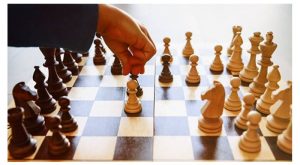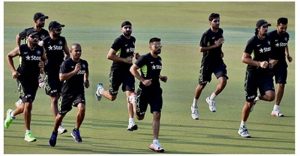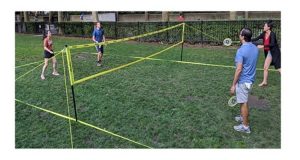
Pehlwani (Kushti) has been a part of India’s rich culture for hundreds of years. Kushti, the traditional form of Indian wrestling, will provide you with several low-tech/body weight training strategies. Indian style pushups (surya-namaskar) and squats (known as dands and baithaks) were made popular by Indian wrestlers; these two are the most popular bodyweight exercises in use today.
Popular Indian Wrestlers
Ghulam Muhammad or The Great Gama
Its said that the legendary Gama pehelwaan (wrestler) had the power to lift a stone weighing 1,200 kilograms. Born in Amritsar as Ghulam Muhammad Baksh, Gama used to do 5000 squats and 3000 push-ups. Known as the Lion of Punjab, the wrestler was awarded the World Heavyweight Championship on October 15, 1910.
Dara Singh
Popularly known as an actor (played Hanuman in Ramayana), Indian wrestler Dara Singh started his career in Pehlwani by competing in amateur fights. Soon, he became the National Wrestling Champion in 1954, at the age of 26. Dara Singh became the Commonwealth Champion by defeating the popular wrestler King Kong.
However, just like Hockey, India’s performance in wrestling (in the International arena) took a nosedive, and its only in the last decade or so that Indian wrestler’s have started winning at the international level.
Sushil Kumar, Sakshi Malik, Geeta Phogat (Dangal movie was made on the Phogat sisters) are some of the current crop of wrestlers who have made India proud in wrestling.
Indian women wrestlers fear the Japanese, say its difficult to beat them
In the 2017 Asian Championships, not a single woman wrestler could get past the Japanese, Sakshi Malik says its going to be tough to beat them in this lifetime.
And the reason for the despondency?
Sakshi, Vinesh Phogat and Divya Kakran lost to Japanese wrestlers in the gold-medal bouts of their respective weight divisions to settle for silver medals in the 2017 Asian Championship.
“It is very difficult to beat the Japanese girls. It will be tough to match them in this lifetime or even the next. We would have to take rebirths in order to beat them. They are simply too good,” Sakshi, who was the first Indian woman wrestler to bag an Olympic medal.
So which are the areas where the Japanese women score over others, that sets them apart from the rest?
It seems its their speed, agility, skills and techniques.
“It is a combination of a lot of things. The facilities provided to them, the way their coaches take note of even the minor mistakes they make during a bout. They are very systematic and methodical in their approach. Moreover, they are much more superior even when it comes to their skills and technique,” explained Sakshi.
“They are extremely agile and move very fast on the mat. It is their speed that we are unable to match most of the times. We will have to increase our speed immensely in order to pose a competition to them,” said Vinesh.
“I was applying all tactics in my book during my gold medal bout against Sara but she was simply far more superior. It was tough to catch up with her,” said Divya.
So is the training of the Japanese women wrestlers different?
Besides the conventional wrestling training methods, there’s the Japanese do a lot of cross-training. The wrestlers and judokas also train together to improve their overall reflexes and skills.
“Their base is very strong. Since childhood, the emphasis is on their physical fitness. They are trained so well during their growing up years that when they are put into any sport, they are bound to do well. Moreover, Japanese girls were exposed to wrestling some 20 years back, while we started coming out only in the last 6 -7 years, so we will take time to catch up with them,” said Indian women’s team wrestling coach.
So how about hiring Japanese coaches to train Indian wrestlers?
It seems our Indian wrestling federation has already tried that, but the Japanese don’t seem to be too keen to share their secrets.
“We have asked them to allow our girls to train in Japan but they do not encourage such proposals. Even here at the Asian Championship, they stick to their training arenas and are not too keen on practicing with wrestlers of other countries,” said one official.
Only once in the past had the Indian officials managed to convince the Japanese to allow the Indian girls to train there, and that too because Japan had no stake in that event. “Our girls benefitted immensely by training in Japan before the 2010 Commonwealth Games and that showed in the results. We finished with as many as six medals in women’s wrestling, including three gold, two silver and a bronze,” said an Indian wrestling official.
Now that the Japanese coaches are reluctant to share their techniques, we will have to device our own. Indian wrestlers will need to become mentally strong as well. They will need to be more positive. Right now, they seem to be completely demoralized. But then, they have time on their hand. And today, India has access to the best facilities and the best trainers, so time for these ladies to focus on their jobs again. Other Indian sports team have managed to up their fitness, speed and agility, so even these women wrestlers should be able to do it.









Leave a Reply